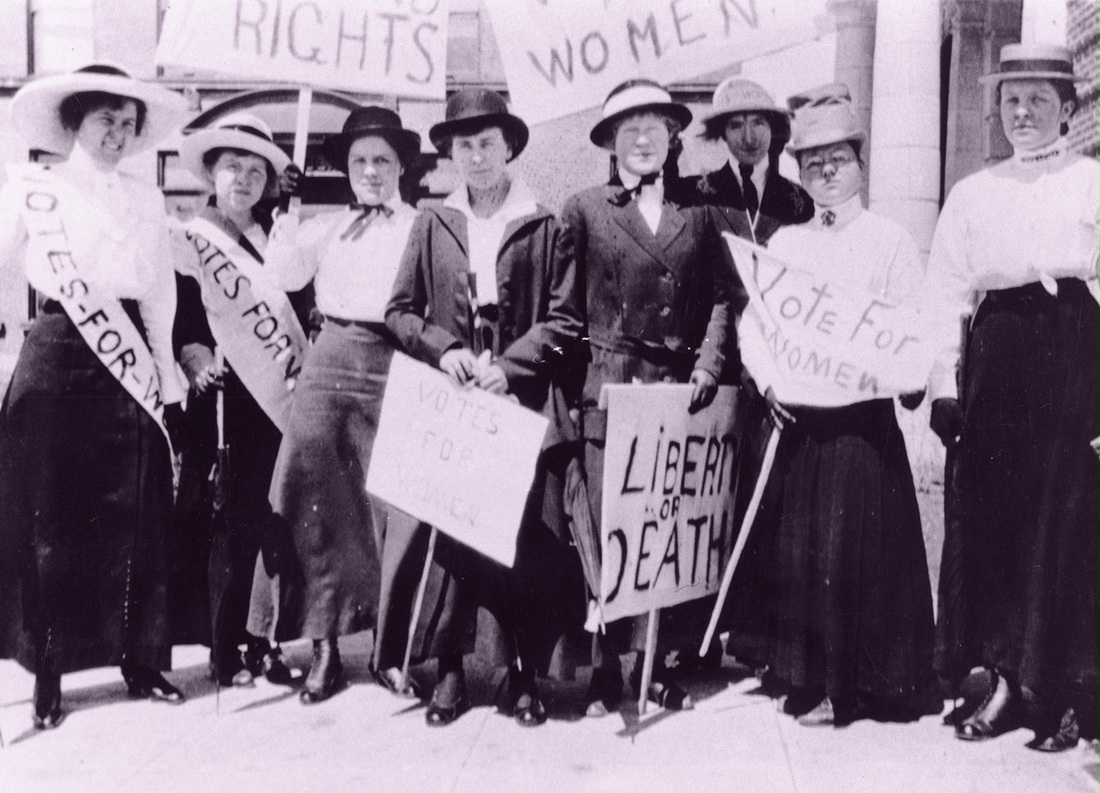Women's Suffrage In Progressive Era

The Progressive Era, spanning from the late 19th to the early 20th century, was a transformative period in American history, marked by significant social, economic, and political reforms. Among the most pivotal movements of this era was the women’s suffrage movement, which sought to secure women’s right to vote and participate in the democratic process. This movement was not only a testament to the determination and resilience of women but also a reflection of the broader societal changes and intellectual currents that characterized the Progressive Era.
At the heart of the women’s suffrage movement were women like Elizabeth Cady Stanton and Susan B. Anthony, who pioneered the fight for women’s rights. Their efforts culminated in the Seneca Falls Convention of 1848, the first women’s rights convention in the United States, where the Declaration of Sentiments was signed, calling for equal rights for women, including the right to vote. However, it would take decades of relentless activism, lobbying, and public awareness campaigns before the 19th Amendment to the Constitution, granting women the right to vote, was finally ratified in 1920.
The women’s suffrage movement was intricately linked with other progressive reforms of the era, including labor rights, prohibition, and education. Suffragists argued that the right to vote was essential for women to protect their interests, particularly in areas such as labor laws, education, and healthcare. The movement also drew support from various socio-economic groups, including the working class, who saw the vote as a means to improve their living and working conditions.
One of the key strategies employed by suffragists was the use of public demonstrations and marches. The 1913 suffrage parade in Washington, D.C., for example, drew thousands of participants and marked a turning point in the movement, bringing national attention to the cause. Suffragists also utilized the press, publishing numerous newspapers and pamphlets to disseminate their message and build public support. The use of hunger strikes by imprisoned suffragists, including Alice Paul, further dramatized the movement, evoking public sympathy and increasing pressure on politicians to act.
The role of the National American Woman Suffrage Association (NAWSA) was pivotal in coordinating the national effort. Under the leadership of Carrie Chapman Catt, NAWSA adopted a “winning plan” that focused on securing the vote through state-by-state campaigns, complemented by a federal amendment. This strategic approach ultimately led to the successful passage of the 19th Amendment.
Despite these advances, the movement faced considerable opposition. Many argued that women’s roles were primarily domestic and that political participation would undermine family structures. Others contended that women lacked the intellectual and emotional capacity for political decision-making. These arguments were countered by suffragists, who presented evidence of women’s capabilities in politics, education, and the workforce, challenging traditional gender roles and stereotypes.
The women’s suffrage movement during the Progressive Era was not without its internal conflicts and debates. Issues of race and class led to divisions within the movement. African American women, for instance, faced the dual challenge of racism and sexism, often finding themselves marginalized within the movement. The exclusion of black women from some suffrage organizations and the reluctance of some white suffragists to address issues of racial inequality created tensions that would continue beyond the achievement of women’s suffrage.
The passage of the 19th Amendment in 1920 marked a significant milestone in the history of American democracy, extending the right to vote to millions of women. However, the fight for equal rights and opportunities for women did not end there. The legacy of the women’s suffrage movement continues to influence contemporary feminist movements, highlighting the ongoing struggle for gender equality and the importance of political participation in achieving social change.
In conclusion, the women’s suffrage movement of the Progressive Era was a complex and multifaceted phenomenon, driven by a broad coalition of women from different backgrounds and socio-economic statuses. Through their determination, strategic activism, and perseverance, suffragists achieved a fundamental transformation in American society, paving the way for future generations of women to engage in politics and public life. Their story serves as a powerful reminder of the power of collective action and the importance of continuing to strive for a more inclusive and equitable democracy.
What was the main goal of the women’s suffrage movement during the Progressive Era?
+The main goal of the women’s suffrage movement was to secure the right to vote for women, thereby granting them a political voice and the ability to participate in the democratic process.
Who were some of the key figures in the women’s suffrage movement?
+Elizabeth Cady Stanton, Susan B. Anthony, Carrie Chapman Catt, and Alice Paul were among the most influential figures, each contributing significantly to the movement through leadership, activism, and strategic planning.
What strategies did suffragists use to advocate for their rights?
+Suffragists employed a variety of strategies, including public demonstrations, marches, lobbying, publishing, and hunger strikes, to draw attention to their cause and build public support.
What was the significance of the 19th Amendment to the Constitution?
+The 19th Amendment, ratified in 1920, granted American women the right to vote, marking a major milestone in the struggle for gender equality and democratic participation.
How did the women’s suffrage movement intersect with other progressive reforms of the era?
+The movement was closely linked with other progressive reforms, such as labor rights, prohibition, and education, as suffragists argued that the right to vote was essential for addressing a wide range of social and economic issues affecting women’s lives.
What legacy has the women’s suffrage movement left on contemporary society?
+The movement’s legacy includes not only the extension of voting rights to women but also the inspiration and groundwork for subsequent feminist movements, emphasizing the ongoing importance of political participation and the pursuit of gender equality.


